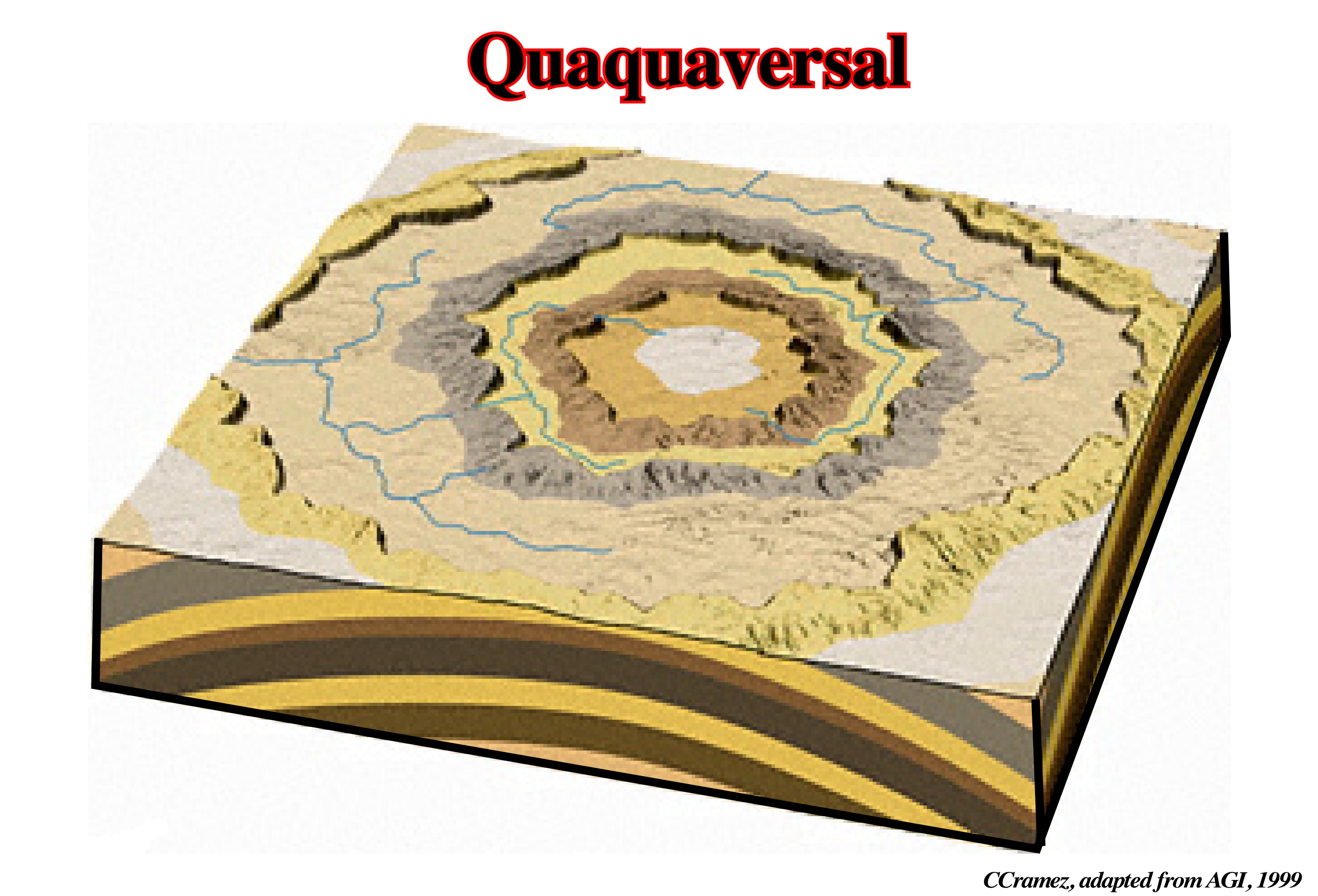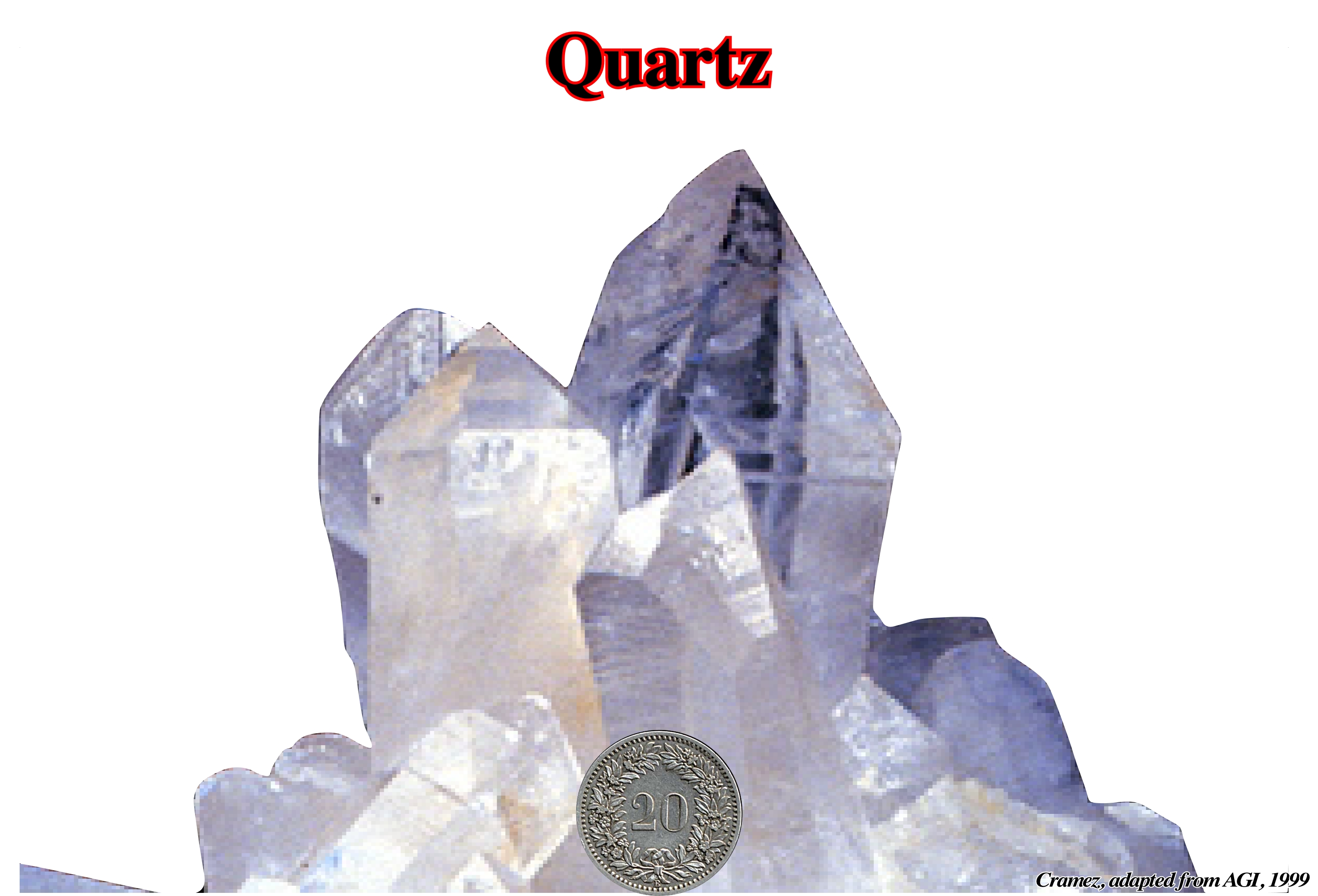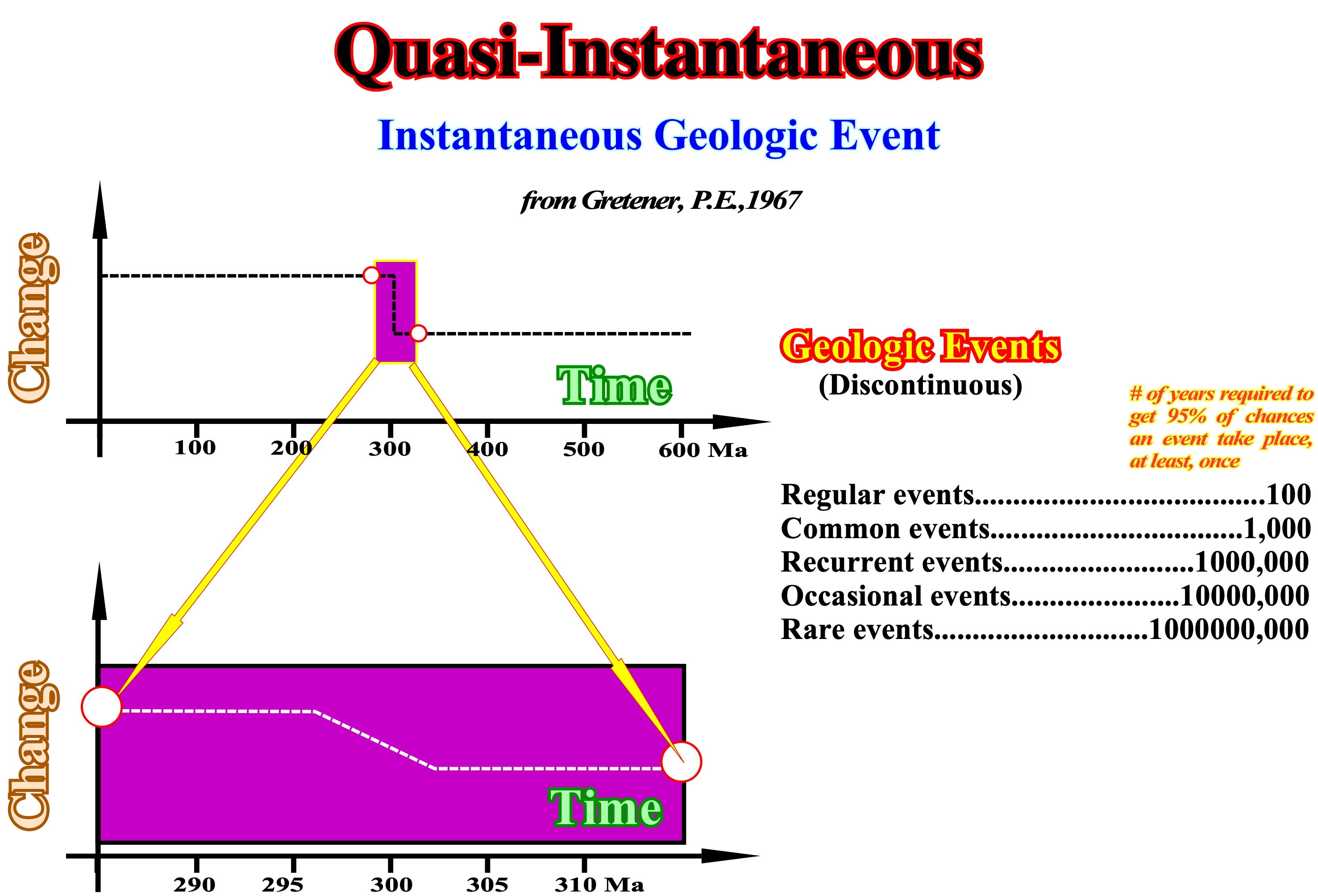

Quaquaversal (Bates, R. L. & Jackson J. A., 1980).
Strata or structure dipping outward in all directions away from the central point.

This term has been also used as a synonym of periclinal. Salt domes are examples of this type of structures, as well as some turtle backs and salt glaciers.
Quartz
Crystalline silica SiO2. It is after feldspar the most common mineral.

Quartz occurs either in transparent hexagonal crystals (colourless, or colored by impurities) or in crystalline or cryptocrystalline masses. Constituting 12% (by mass) of the lithosphere, quartz is the most common mineral (oxygen and silicon are respectively the first and second constituents, in order of importance, of the lithosphere); it is an important component of granite, with which it fills the residual spaces, and of granite metamorphic rocks (gneiss, quartzite) and sedimentary rocks (sand, sandstone). (https://fr.wikipedia.org/wiki/Quartz_(minéral))
Quasi-Instantaneous (Termier, H & Termier, G., 1956).
A geological event is considered as quasi-instantaneous when it occurs in an interval of geological time too small to be subdivided.

Seismic sequences are bounded by unconformities induced by relative sea level changes with an age difference lower than 3-5 Ma. Such a period of time is considered as geologically instantaneous in relation to the Phanerozoic time-span. since its less than 1/100 of the total time (mathematically, an episodic geological event is characterized by a time-duration, rarely, exceeding 1/100 of the total time considered. When expressed, graphically (change versus time), an episodic geological event, it represents just the thickness of the pencil line. The age difference between the unconformities bounding a sequence-cycle does not correspond to the deposition time. Their completeness (relation between the effective time of deposition and total geological time) is, always, <1. The majority of geoscientists consider the sedimentary records are incomplete and separated by significant periods of calm during which nothing happens. In most stratigraphic sections, the duration of hiatus (no deposit or erosion) is greater than the total duration o deposition of preserved sediments.